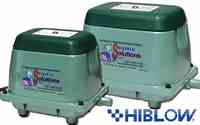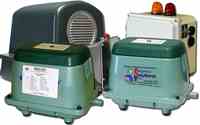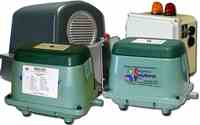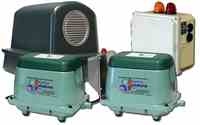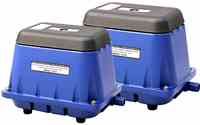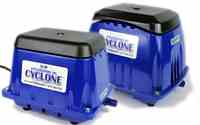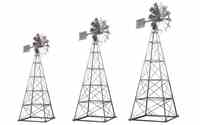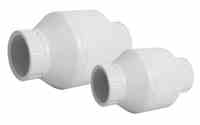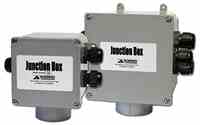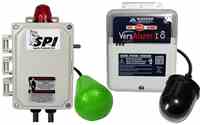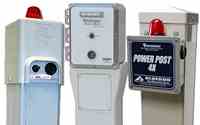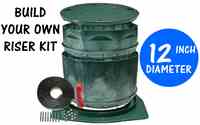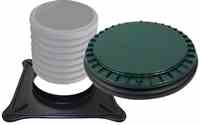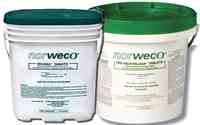SepAerator® Frequently Asked Questions
HOW HARD IS IT TO INSTALL A SEPAERATOR® PACKAGE?
A SepAerator® is relatively simple to install. On average, a septic system contractor could install this product in a couple of hours, while a handy man homeowner might take a little longer. A complete Owner’s Manual with installation instructions comes with each SepAerator® along with help if needed by our technical support staff.
HOW SOON AFTER INSTALLATION WILL I SEE RESULTS?
Generally the discharge from a septic tank will be clear and odorless within the first 2 to 4 weeks, after installing the SepAerator®. The clear and odorless discharge will pass into your secondary treatment system and begin working on the secondary treatment system immediately with noticeable results within the first 4 to 6 weeks. These results would include the water level in the septic system field dropping. By allowing the SepAerator® to continue running the field or secondary treatment system will continue to clean itself by aerobic bacteria breaking down the buildup of waste that passed from the existing septic tank and is now clogging the secondary treatment system. By means of aerobic bacteria processing the waste build-up in the field, the life of that field should be extended by many years. This will save you many thousands of dollars versus a new septic system.
DO I HAVE TO INSTALL SEPTIC TANK RISERS AND LIDS?
Yes if you do not already have access with existing risers and lids to your septic tank you should install our riser and lid kit. The SepAerator® Diffuser assembly is installed in the first/inlet compartment of your septic tank. You would very rarely need to remove the diffuser for cleaning with a garden hose (probably at the same time you pumped your tank, which should be every 3 to 5 years) so access to the diffuser is optional. On the last/discharge compartment of your septic tank our exclusive Air Driven Particle Recirculator would be installed. Septic tanks designed with single compartments should have this filtering device in order to eliminate the possibility of small particles from being forced into the secondary treatment system by the constant movement of water caused by the SepAerator® diffuser. Although the filter within the Air Driven Particle Recirculator is the only one of it's kind on the market today, we would still recommend that it be removed and washed with a garden hose approximately every3 to 6 months. Two and three compartment septic tank reduces the likelihood of any particles exiting your tank because of the additional compartment walls, however the SepAerator's® unique filtering assembly provides a final polishing of the discharge, which is very important step toward prolonging the life of an existing secondary treatment system or field.
WHAT MAINTENANCE IS REQUIRED ON THE SEPAERATOR® SYSTEM?
The maintenance on a SepAerator® is simple and only takes a few minutes to perform. You would need to clean the small filter located on top of the air pump, with air or water, every 6 months. The septic tank filter would need to be removed and washed with a garden hose approximately every 3 to 6 months. Since this is a self-cleaning filter, some users are going in excess of a year before cleaning, but likewise under more heavy usage, such as extensive use of a garbage disposal or larger than normal numbers of people using the system, a more frequent cleaning could be necessary. With the riser and lid access this cleaning process could be done in a few minutes. The filter handle extends above the sewage line. Simply grasp the handle and pull the filter out of its housing and wash with a garden hose. Then reinstall filter back in the housing and place lid back on tank.
SHOULD I HAVE MY TANK PUMPED OUT BEFORE INSTALLING THE SEPAERATOR®?
Although the SepAerator® will work very effectively and quickly in a septic tank that has not been pumped, we believe that it is important to remove all of the sludge that has built up in your septic tank over the years. The SepAerator® diffuser assembly is designed to sit solidly on the bottom of the tank, which it cannot do if there is an excessive amount of sludge build up. Further without pumping a tremendous amount of sludge build-up would need to be broken down and turned into clear liquid before discharge could occur, which would slow the rejuvenation process down. Pump the tank and remove the anaerobic bacteria and sludge will allow the rejuvenation process to begin immediately.
WILL I EVER HAVE TO PUMP AGAIN AFTER INSTALLING THE SEPAERATOR?
There has been a lot of confusion and we believe misunderstanding in the marketplace that once the dynamic of a septic tank is changed from anaerobic bacteria (bacteria that grows in an environment without oxygen) to aerobic bacteria (bacteria that needs oxygen to grow) than you can save hundreds if not thousands of dollars because you will never need to pump your septic tank again. This is absolutely false. Although the SepAerator® will process waste in your septic tank to a clear and odorless discharge, there will always be a buildup of sludge and other materials that will not break down. Those would eventually have to be pumped out. We have a company that has been in the aerobic and septic system installation business for many years and service many thousands of aerobic and septic systems. It is usually our recommendation that either a septic tank or aerobic system be pumped every 5 years. We hear it all the time that some of our customers brag that they have had a septic tank for 10 years and have never had it pumped. My response to them is “That is why you have us here today looking at replacing your septic system. If you would have had it pumped regularly it would quite possibly have lasted much longer.” Pumping your septic tank every 3 to 5 years as a matter of routine maintenance is similar to changing oil in your car every 3,000 to 5,000 miles. You don’t have too, however if you do not, the repairs to your engine will usually cost far more than the initial expense of the oil change.
DOES THE AIR PUMP HAVE TO BE LOCATED RIGHT ON TOP OF THE TANK?
No, you can remote locate the air pump if you choose. We recommend that you keep the air pump within 80 feet of the Septic Tank. We highly suggest that you keep the air pump by the septic tank, which will eliminate the need to run extra air line, however we understand that cosmetically you might prefer to hide it.
WHY SHOULD I BUY THE SEPAERATOR® INSTEAD OF COMPETING PRODUCTS?
The answer to that is simple. The SepAerator® was developed by people who have been in the septic system installation/maintenance business since 1989 with a combined experience of more than 50 years. Our extensive experience, specifically in the aeration industry, installing and servicing aerobic systems as well as building aerobic systems for the past 14 years has been beneficial in designing the SepAerator®. The purpose for developing the SepAerator® is to provide those homeowners who have an existing septic tank the opportunity to quickly and inexpensively modify their existing septic tank system and take advantage of the latest aerobic technology available today. The most important component necessary to change the dynamic of a septic tank to the aerobic process is a proper sized air pump. Most competitive systems offer much smaller air pumps than we believe necessary.
The SepAerator® utilizes the most popular air pump and size in the aerobic industry today. The second most important component is the diffuser assembly, which provides adequate air distribution along with proper effluent circulation to ensure the aerobic bacteria will be able to its job very quickly. Septic Solutions, Inc. developed the SepAerator® diffuser assembly over many years with a simple but yet very effective design that will work as expected with minimal maintenance. The final and a very important component that sets our SepAerator® far ahead of the competition is our innovative Air Driven Particle Recirculator. When the proper amount of air is added into a septic tank the effluent will begin moving in the tank in a fashion similar to a whirlpool. It is imperative that this movement does not cause any premature discharge of particles from the septic tank into the existing field or secondary treatment system. This is especially important if you have a single compartment septic tank. This can be accomplished with the addition of the right type of septic tank filter. Most septic tank filters can cause additional problems such as the need to clean the filter very often, and/or allow small particles to still pass through some types of filters. Septic Solutions, Inc. has addressed this through extensive testing and over time have developed our self-cleaning fixed media filter. This is the only one of its kind. It is very Easy to Install and Simple to Maintain.


